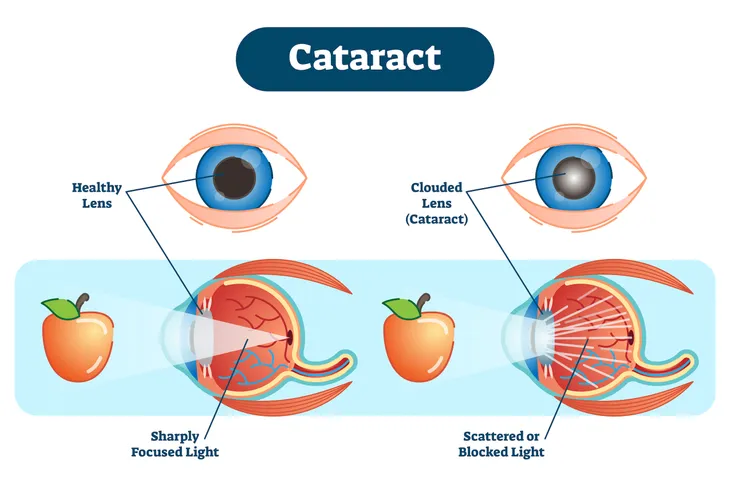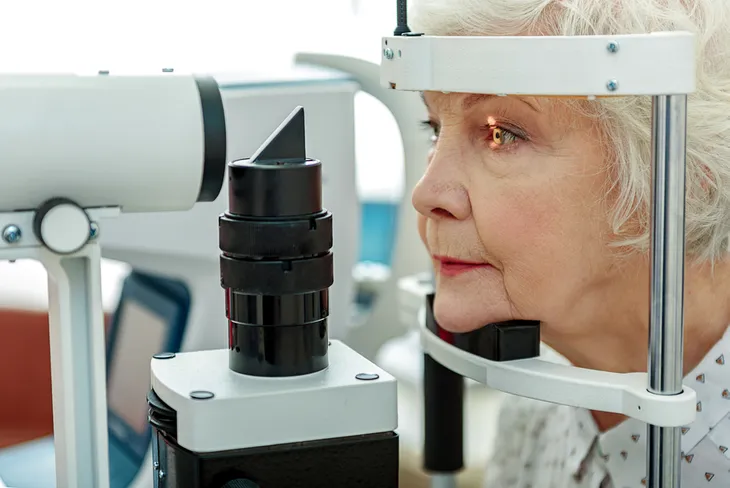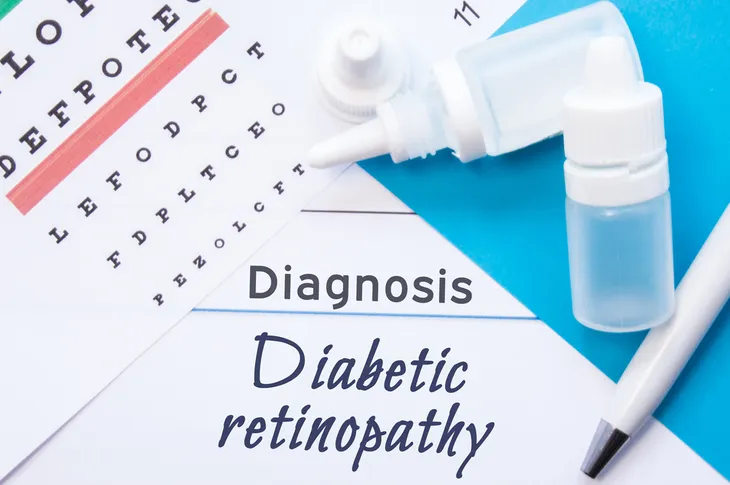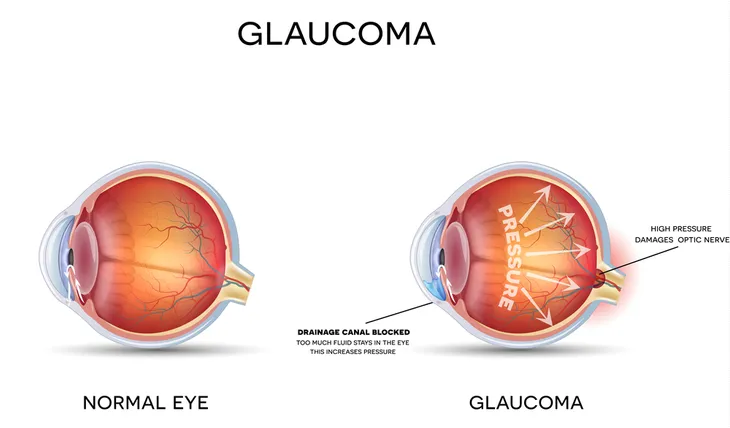In the United States, more than 4.2 million people aged 40 years or older are legally blind or have low vision. Most people assume blindness means the inability to see at all, but the definition of legal blindness is having 20/200 vision or worse. In comparison, low vision means significant vision loss that impairs daily function.
Sight is one of the most highly regarded and valued senses, which is why it’s critical to take care of your eye health. Learning about things that can cause vision loss will help you seek early intervention, diagnosis, and rehabilitation, if possible.
Keep reading to learn about eight diseases that can cause blindness.
Age-Related Macular Degeneration (AMD)
AMD is the leading cause of adult blindness in the developed world. It is a progressive disease that persistently affects your eye’s retina. The retina is responsible for sensing light and sending signals to the brain. When someone has AMD, fatty deposits build up, which block the retina’s ability to absorb essential nutrients needed to function.
In the early stages, symptoms may be subtle, such as problems seeing at night. Therefore, it’s critical to talk to your doctor if you notice signs of impaired vision when in dark or dimly lit areas. As the disease advances and the part of the retina called the macula deteriorates, it will gradually become difficult to read, recognize faces, and drive.
Best’s Disease (or Vitelliform Macular Dystrophy)
Best’s disease is a genetic eye disorder that causes progressive vision loss. The illness affects the macula portion of your retina, which is essential for reading, writing, or watching television. Unlike many conditions that cause blindness, Best’s disease typically does not affect your peripheral vision or ability to see at night.
The damage to your cells causes distorted or blurry central vision that, over time, may lead to a black space in the middle of your visual field. There are six stages of Best’s disease, with the last one being legal blindness. Currently, there’s no cure for the disorder, but a healthy eye diet may be beneficial.
Cataracts
By age 75, half of all people in the U.S. have cataracts. Health experts project that, by 2050, the number of cases will double to approximately 50 million. Cataract is the term used to describe when the lens becomes cloudy, impairing your vision and causing blindness.
The good news is that treatment to remove cataracts is widely available. The surgery removes the cloudy lens and replaces it with a clear, artificial one, which becomes a permanent part of your eye. Healing typically takes about eight weeks, and the procedure does carry the risk of infection or bleeding.
Corneal Disease
The cornea is the outer layer of your eye and has two main functions. It’s clear dome shape helps protect the eye from particles and germs, and it also helps your eye focus light to see clearly. Signs that you may have a corneal condition include pain, blurry vision, sensitivity to light, and redness.
Corneal disease refers to various conditions, such as inflammation, viral infections, and dystrophies that affect the cornea. Over 20 corneal dystrophies can cause issues with your sight. Treatment options for this disease include eye drops, pills, transplant surgery, and laser therapy.
Devic’s Disease (or Neuromyelitis Optica [NMO])
Devic’s disease, also known as NMO, is a rare autoimmune disorder that affects the body’s optic nerves, spinal cord, and central nervous system. Your optic nerves carry signals from the eyes to the brain. As a result, NMO can lead to vision loss or blindness in one or both eyes.
You may experience symptom flare ups periodically or a single attack that lasts one to two months. Your doctor would likely take an magnetic resonance imaging (MRI) scan, blood samples, and test your optic nerves as part of the workup for this disease. A physician may prescribe medications to stop your immune system from attacking your optic nerves, but there’s currently no cure for NMO.
Diabetic Retinopathy
This complication affecting the eyes results from diabetes, which is a disease that impacts how your body processes sugar. With diabetic retinopathy, the blood vessels in the tissue at the back of your eye become damaged, leading to blindness.
Symptoms of diabetic retinopathy include blurred vision, impaired colors, floaters, or dark spots in your vision, as well as, ultimately, vision loss. You are susceptible to this condition if you have type 1 or type 2 diabetes. Your chances can increase if you do not manage your sugar levels properly or if you become pregnant.
Glaucoma
Doctors use this term to describe a group of eye conditions that damage the optic nerve. Typically, an increased amount of pressure in your eye leads to damage. Often, there are no warning signs, and the effects are so gradual that the condition can go undiagnosed until it has reached advanced stages.
If you have regular eye appointments, where an optometrist or ophthalmologist measures your pressure, you might catch glaucoma early. In that case, you could prevent or slow your vision loss. Being over 60 years of age, having a family history of the disease, or having had an eye injury may all increase your chances of developing glaucoma.
Retinitis Pigmentosa (RP)
RP is a group of rare genetic disorders that lead to a loss of peripheral vision and increases difficulties with night vision. This condition includes a breakdown and loss of retinal tissue at the back of your eye. RP affects an estimated one in 4,000 people worldwide.
In the early stages, you may experience night blindness and a reduction in the space you can see at any given time. As symptoms progress, your field of vision will continue to shrink — creating a tunnel vision effect. RP is hereditary, so talk to your doctor if you have a family history of the disease.
Play It Safe
It’s common to experience some form of eye discomfort at one time or another. Play it safe by always discussing your symptoms with your eye doctor and going to check ups regularly. Some of these diseases have treatments to slow the effects or improve your vision.
If you suspect an illness may be leading to impairment of your vision, contact your medical professional and schedule an appointment.












